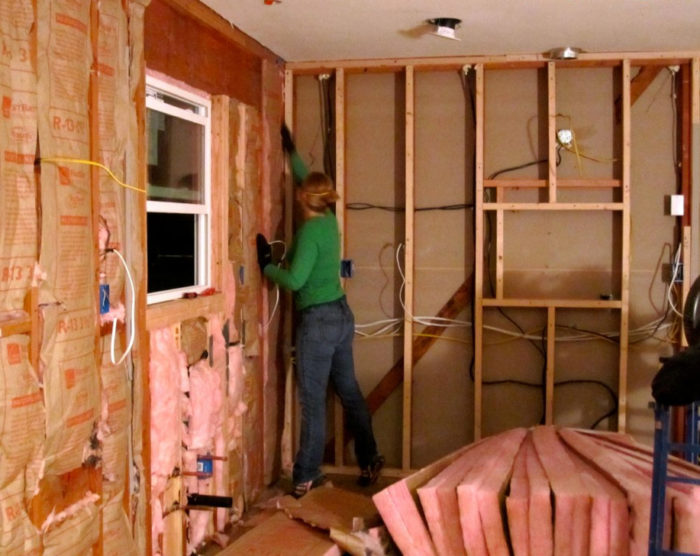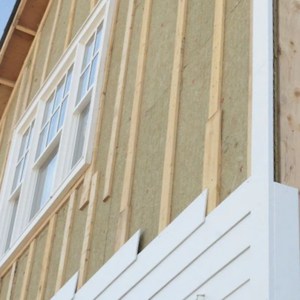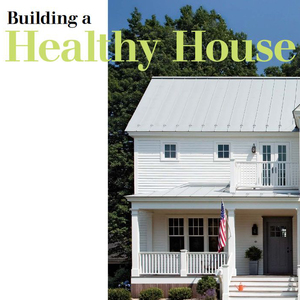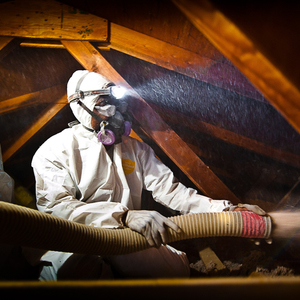
Image Credit: Sarah / CC BY-ND / Flickr
On top of all the other problems anyone building a new house is bound to encounter, Carolyn Farrow has a concern that outweighs all others: her daughter’s health.
“Our toddler has a lot of chemical sensitivities and respiratory issues and insulation decisions are completely overwhelming me,” she writes in a post at GBA’s Q&A forum. “I can’t find any contractors that I trust.”
The allergist and pediatrician treating Farrow’s daughter say she could react to virtually any type of insulation, and they are not comfortable making any specific recommendations.
“They both suggested finding an insulation contractor that I trust and is not just trying to sell me what makes him the most money,” Farrow says. “So, that is what I am trying to do. I have researched everything and nothing seems 100% safe. What are we supposed to do? Not insulate our home?
“I am not asking an insulation specialist to make medical claims or ensure the safety of materials,” she continues. “But I am looking for an insulation specialist that is informed about their products and makes an effort to choose the safest products possible.”
Farrow’s quest is the subject of this Q&A Spotlight.
Concerns are misplaced
Given that no one seems to know exactly what will cause a negative reaction, Nate G replies, there’s no real way to avoid potential risk. Even so, as long as the insulation is installed correctly and contained in the walls of the house, there’s probably not a lot to worry about. Farrow is, he continues, probably “barking up the wrong tree” by focusing her concerns on insulation. A greater threat are the other building materials and furnishings that affect air quality.
“The products that would be the ones to worry about are…
Weekly Newsletter
Get building science and energy efficiency advice, plus special offers, in your inbox.

This article is only available to GBA Prime Members
Sign up for a free trial and get instant access to this article as well as GBA’s complete library of premium articles and construction details.
Start Free TrialAlready a member? Log in















6 Comments
This is such a touchy area,
This is such a touchy area, but an architect I know who dealt with it let the person with the chemical sensitivities decide; she put a sample of a range of materials on the bedside table and let the person spend the night with it in the room. The weirdest things caused discomfort. In the end they settled on rock wool with solid wood panelling on the walls instead of drywall. It's like living in a cedar closet but it works for them.
Response to Lloyd Alter
Lloyd,
That's a good way to go. As commenters on the original Q&A thread on which this article is based noted, you can't expect an insulation contractor to advise homeowners about an issue that involves symptoms and medical issues. These issues should generally be discussed with a physician.
But as Carolyn Farrow (the original poster) discovered, her child's pediatrician and allergist were reluctant to recommend insulation materials.
Your method is as good as any I've heard about. After your method is used, however, it makes sense for contractors to remind homeowners that builders can't be expected to provide medical advice; nor can they make any promises that certain materials will alleviate medical symptoms.
Healthy indoor environments
It is great to see this subject getting some coverage here!
Some insulation materials that were not mentioned, but that have no toxic components would include Air Krete or other cementitious foams, hempcrete, and various natural fiber insulations including cotton, straw, hemp and cellulose batts. These are not in most building supply stores, but they are available and most offer full disclosure of their full ingredient lists.
Paints and finishes will also be important to consider, and there are numerous paint companies that make exceptionally clean products, including Kreidezeit, Auro, AFM Safecoat and Allback. These companies also make wood and floor finishes that are non-toxic. There are also good suppliers for non-toxic caulking and adhesives. Of particular importance is non-toxic drywall mud. Most products contain dangerous chemicals as well as fungicides, and these are sanded into extremely fine particulate throughout the house. Companies like Murco make hypo-allergenic drywall mud.
Making a clean, non-toxic interior can be difficult. It requires every trades person to be on board. Many people will default to their regular products... Clean flooring can easily be laid using toxic adhesive, or clean tile can have toxic grout sealer applied. Ensuring that toxins aren't part of the building requires vigilance and lots of commitment from all involved.
As mentioned, high quality air handling equipment with good filtration will also make a huge difference. And those filters need to be changed at regular intervals.
I believe that this issue will be growing in importance in the coming years. The idea that products are "safe" because they are in our walls is extremely limited thinking. Dust from their installation abounds in a home for years. And the chemicals that exist in those materials make their way into our environment at all stages of production, handling, installation and eventual demolition. Toxic compounds will spend the shortest amount of their lifespan in our walls, and the rest in our air, water and soil. This bears consideration when weighing up risks.
Response to Jen Feigin
Jen,
This is an important issue, but I tend to bristle when the word "toxic" (poisonous) is used to describe common building materials. When this misuse of the word "toxic" becomes commonplace, it makes it harder for experts who are concerned with substances that are actually toxic (for example, lead) to be heard over the din.
There is a general consensus that when ingested at high enough dosages, substances like lead, asbestos, formaldehyde, and radon are toxic. The same cannot be said of insulation materials that cause symptoms in chemically sensitive individuals.
Multiple chemical sensitivity is a controversial subject. For the time being, however, let's not divide insulation materials into two categories -- "toxic" and "nontoxic." Let's find another word to describe insulation materials that a few individuals can't tolerate.
Toxicity
I agree with Martin. You cannot call products toxic when used as according to instructions, they have basically no effect on the majority of people. And the people that they do affect, have either had repeated exposure or a medical reason to be affected. That may leave only a minuscule number of people that are negatively affected for what seems to be no reason.
And foidermore
The issue for people who suffer from allergies or chemical sensitivities may have nothing to do with "toxicity," synthetic chemicals, etc. As Lloyd notes, it's unpredictable what will set an individual off. I know people who have pretty bad reactions to spanish cedar sawdust.
Log in or become a member to post a comment.
Sign up Log in